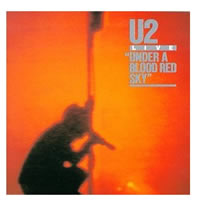
I’m a born-again Asian American. Most of my life, I was oblivious to my rich roots and Japanese heritage. I was a banana — yellow on the outside, white on the inside. So probably more than some Asian Americans, I like the idea that May is officially “Asian Pacific American Heritage Month” in the U.S.
There’s a part of me that finds it irritating that APAs get noticed once a year and we’re practically invisible the other 11 months. But I’m glad that former transportation secretary Norm Mineta drafted the legislation to establish this month-long celebration when he was a Congressman. I’m pretty immersed in the APA community now — not just Japanese American, but also the dozens of other Asian ethnic cultures and how they’ve evolved as they’ve become established in the U.S.
APA Heritage Month makes me think of times when I was less connected to my own roots, and not interested in the vast wealth of culture throughout Asia.
When I was a kid, I was into Japanese and Chinese (or more correctly, Chinese American) food. That’s what my family ate when we weren’t eating hamburgers, steak, spaghetti and pizza. This was before I developed my voracious appetite for Indian, Vietnamese, Korean, Cambodian, Singaporean and Filipino food. It was pre-dim sum. And, it was way before I grew to appreciate all kinds of Asian music, both traditional and Asian American.
(Note: For those of you non-Asians who are Asiaphiles, I want to make the distinction that though we Asian Americans appreciate our heritage and understand how we’re steeped in traditional values, we’re all about the mix of being both Asian and American, or perhaps more accurately, being Asian in America.)
One very clear example of my growth and awareness of Asian culture today as opposed to when I was younger, is my appreciation for one particular track in George Harrison’s landmark recording, “The Concert for Bangladesh.” The track is the Indian music performance, “Bangla Dhun,” by the sitar master Ravi Shankar. Continue reading →





 I know exactly where I was the night of June 5, 1983: I was freezing my butt off, soaked to the bone but ignoring my discomfort because I was in musical heaven, surrounded by huge sandstone rocks on both sides, a stormy sky above and a hungry young band called U2 just hitting its stride in front of me, its members playing their hearts out despite the crappy weather.
I know exactly where I was the night of June 5, 1983: I was freezing my butt off, soaked to the bone but ignoring my discomfort because I was in musical heaven, surrounded by huge sandstone rocks on both sides, a stormy sky above and a hungry young band called U2 just hitting its stride in front of me, its members playing their hearts out despite the crappy weather. 







